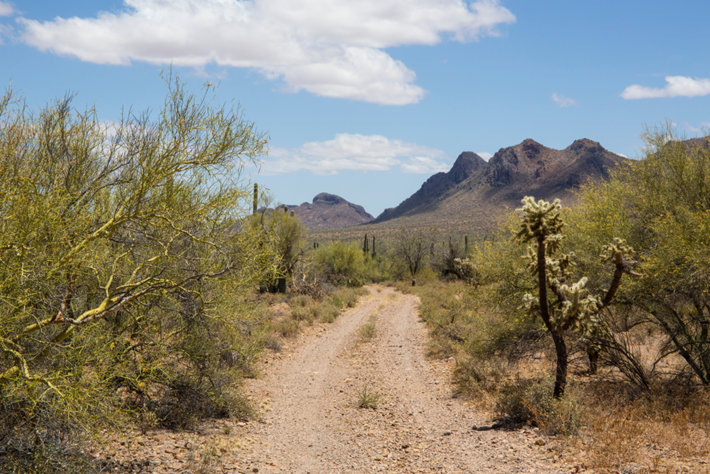Every year, thousands of people from Latin America leave their homelands in the hope of crossing the U.S.-Mexico border on foot to find work. Many die of heat stroke and dehydration or injure their feet and are left to die by “coyotes” (smugglers) guiding them through treacherous desert terrain teeming with cacti, rattlesnakes and scorpions. Yet other dangers abound: assailants and kidnappers after the migrants’ money; armed American vigilantes after their freedom; Border Patrol agents intent on capturing and deporting them.

When undocumented migrants go missing in these borderlands, as they often do, a Tucson, Arizona-based Pentecostal pastor named Óscar Andrade heads out to try to find them—or their mortal remains—at their families’ behest. Andrade heads Capellanes del Desierto (Desert Chaplains), a voluntary rescue and recovery group whose members search for missing migrants in the desert at least once a week and offer them aid.
Motivated by their faith, the Capellanes pray with the grieving families of the missing while updating them about rescue efforts and other news surrounding the “sufrimiento” (suffering) that migrants endure in their quest for a better life across the border.
On a recent Sunday afternoon, Giovanna Dell’Orto, an Associated Press reporter accompanied Andrade as he scoured a well-known smuggling route in the Ironwood Forest National Monument, a 129,000-acre wilderness area in Arizona’s Sonoran Desert.
Wearing knee-high guards to protect them from snakebites and “bowing his head to invoke God’s protection,” as the AP article described it, Andrade began searching for a 45-year-old migrant from Honduras whose family had reported him as missing since late July.
The pastor braved 100-plus degree heat for three hours straight while managing to avoid running into a mountain lion, two rattlesnakes and a scorpion. He then took a short break to call the aunt of a 25-year-old man from the Mexican state of Guerrero who was missing and whose skull Andrade believed he had found a day earlier.
“Much strength, my dear sister,” he told the relative, who responded incredulously that the “coyote” guiding her young nephew had assured her he was alive and that he left him after he injured his feet.
It took the Capellanes three more searches to find the missing Mexican man’s ID card in a wallet in a Native American reservation, 40 feet away from a skull and bones picked clean by wild animals and the searing desert heat.
Andrade, whose wife Lupita and their three teens sometimes join him on his search and rescue missions, hasn’t yet found the missing Honduran. But he hasn’t given up—it typically takes several trips into the desert to locate a migrant’s remains.
Since March 2022, Andrade has been inundated with well over 400 calls from families in Mexico and Central America whose ailing, injured or fatigued relatives were abandoned by “coyotes.”
If that sounds like an alarmingly high number, consider the fact that, according to forensic experts’ estimates, 80 percent of the bodies of migrants crossing the desert are never found, let alone identified or recovered.
“Fragile economies pummeled by the pandemic in Latin America, ruthless trafficking networks that control virtually all illegal crossings, and shifting U.S. asylum policies that affect migrants of different nationality and family status in drastically different ways all contribute to the toll—as does the Southwest’s extreme heat,” observes Dell’Orto.
For their part, the Capellanes view the healing touch they provide to migrant tragedies through a decidedly spiritual lens. “To be out in the desert is more difficult than to be in a church,” said Andrade. “Our commitment is firstly with God, and with the families.”
_______________
From its beginnings, the Church of Scientology has recognized that freedom of religion is a fundamental human right. In a world where conflicts are often traceable to intolerance of others’ religious beliefs and practices, the Church has, for more than 50 years, made the preservation of religious liberty an overriding concern.
The Church publishes this blog to help create a better understanding of the freedom of religion and belief and provide news on religious freedom and issues affecting this freedom around the world.
The Founder of the Scientology religion is L. Ron Hubbard and Mr. David Miscavige is the religion’s ecclesiastical leader.
For more information visit the Scientology website or Scientology Network.


